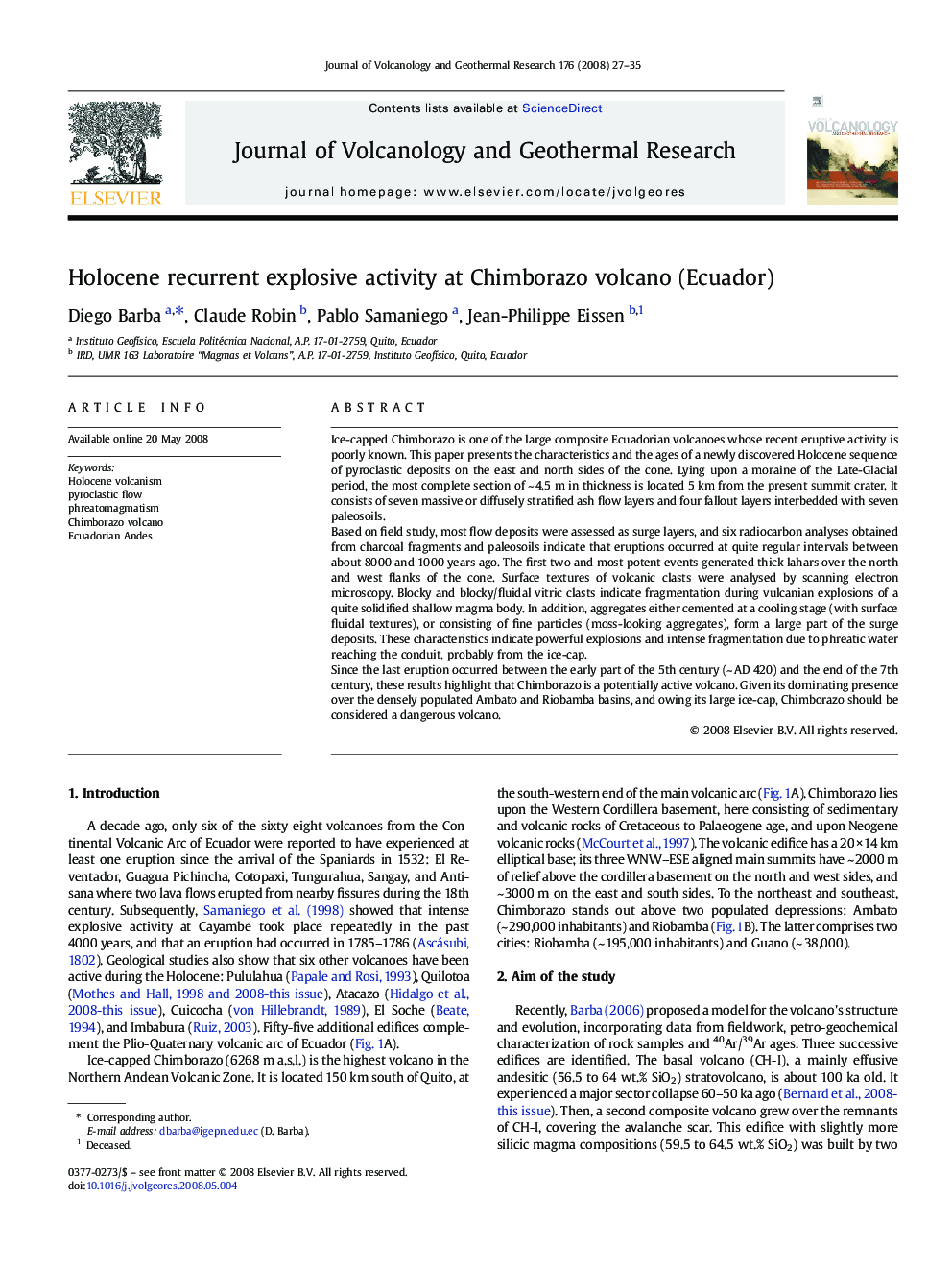| Article ID | Journal | Published Year | Pages | File Type |
|---|---|---|---|---|
| 4714462 | Journal of Volcanology and Geothermal Research | 2008 | 9 Pages |
Ice-capped Chimborazo is one of the large composite Ecuadorian volcanoes whose recent eruptive activity is poorly known. This paper presents the characteristics and the ages of a newly discovered Holocene sequence of pyroclastic deposits on the east and north sides of the cone. Lying upon a moraine of the Late-Glacial period, the most complete section of ~ 4.5 m in thickness is located 5 km from the present summit crater. It consists of seven massive or diffusely stratified ash flow layers and four fallout layers interbedded with seven paleosoils.Based on field study, most flow deposits were assessed as surge layers, and six radiocarbon analyses obtained from charcoal fragments and paleosoils indicate that eruptions occurred at quite regular intervals between about 8000 and 1000 years ago. The first two and most potent events generated thick lahars over the north and west flanks of the cone. Surface textures of volcanic clasts were analysed by scanning electron microscopy. Blocky and blocky/fluidal vitric clasts indicate fragmentation during vulcanian explosions of a quite solidified shallow magma body. In addition, aggregates either cemented at a cooling stage (with surface fluidal textures), or consisting of fine particles (moss-looking aggregates), form a large part of the surge deposits. These characteristics indicate powerful explosions and intense fragmentation due to phreatic water reaching the conduit, probably from the ice-cap.Since the last eruption occurred between the early part of the 5th century (~ AD 420) and the end of the 7th century, these results highlight that Chimborazo is a potentially active volcano. Given its dominating presence over the densely populated Ambato and Riobamba basins, and owing its large ice-cap, Chimborazo should be considered a dangerous volcano.
